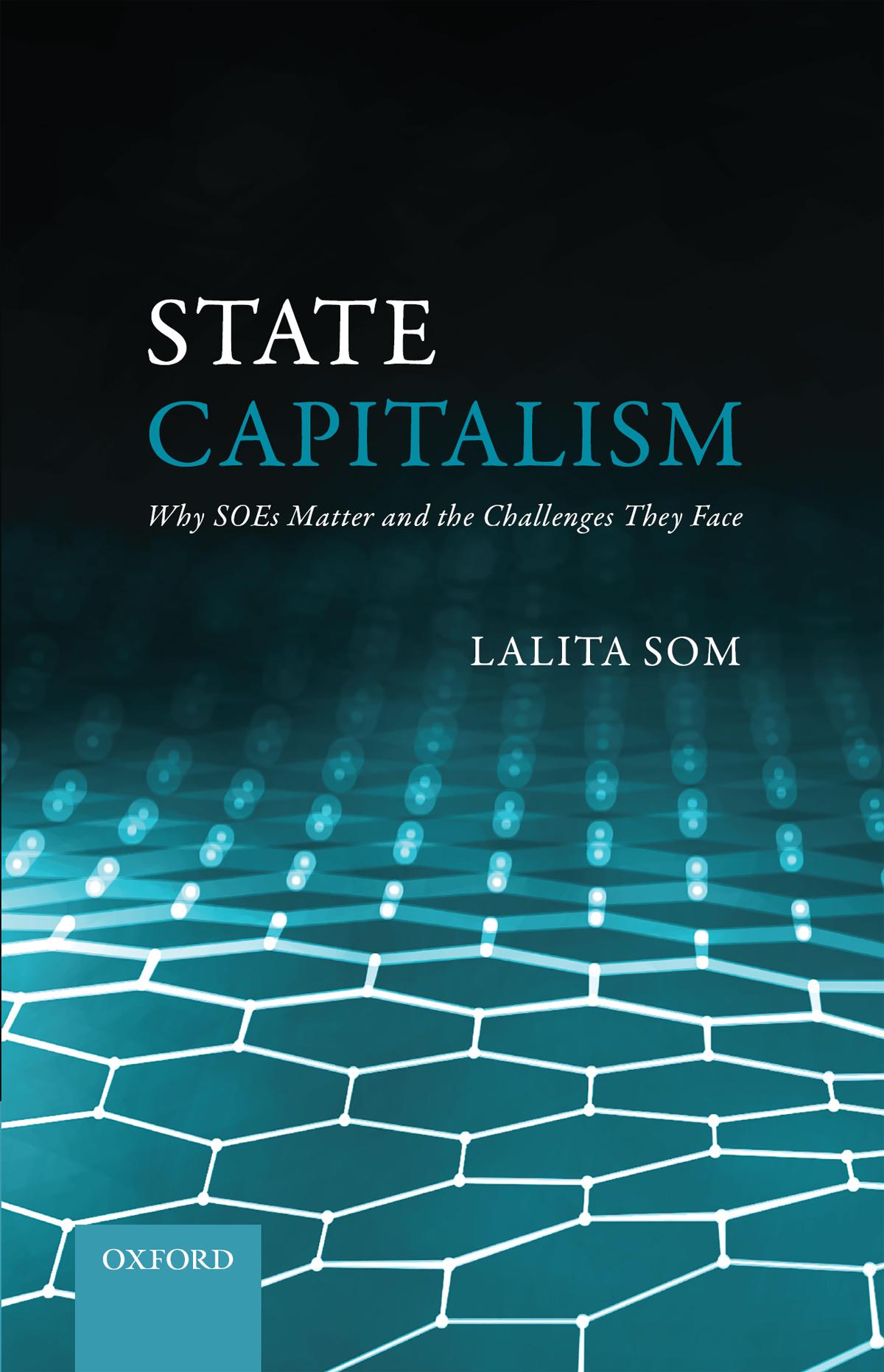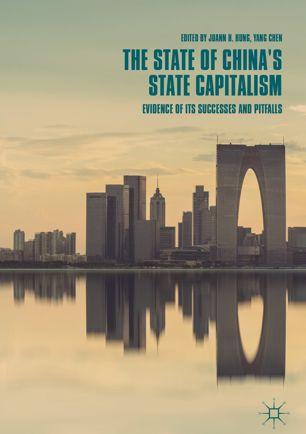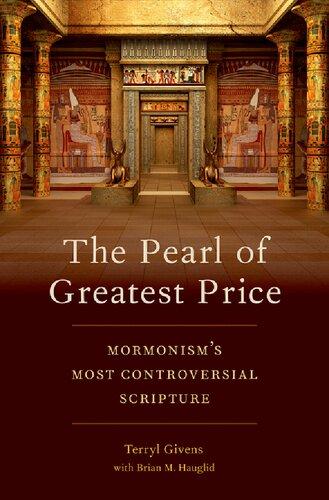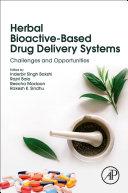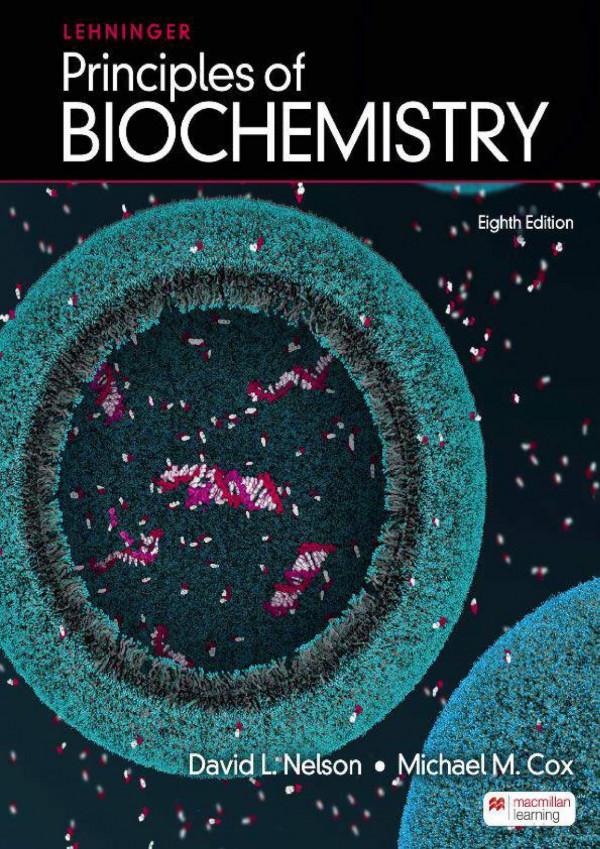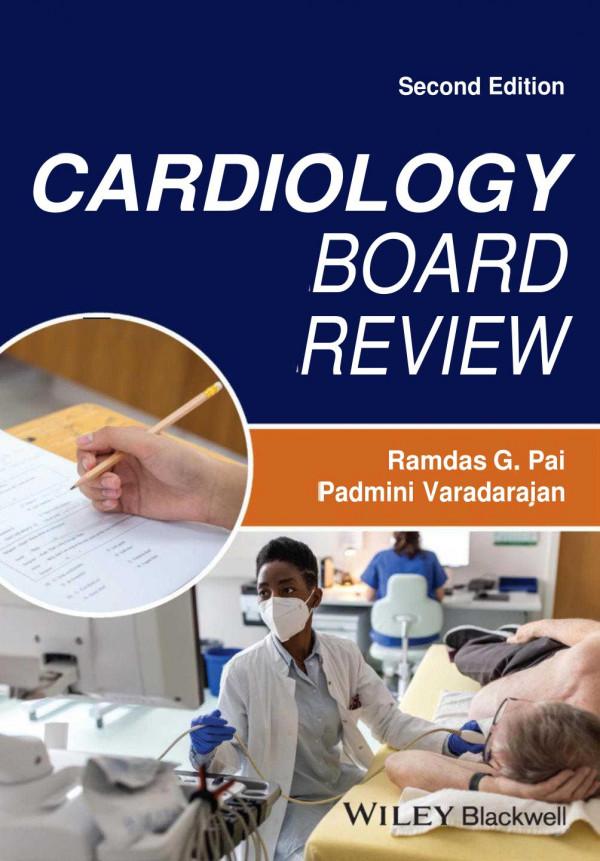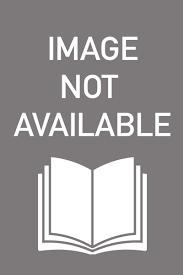THESTATE ANDCAPITALISMINCHINA
MargaretM.Pearson UniversityofMaryland
MegRithmire
HarvardBusinessSchool
KelleeS.Tsai
HongKongUniversityofScienceandTechnology
ShaftesburyRoad,CambridgeCB28EA,UnitedKingdom OneLibertyPlaza,20thFloor,NewYork,NY10006,USA 477WilliamstownRoad,PortMelbourne,VIC3207,Australia
314–321,3rdFloor,Plot3,SplendorForum,JasolaDistrictCentre, NewDelhi – 110025,India
103PenangRoad,#05–06/07,VisioncrestCommercial,Singapore238467
CambridgeUniversityPressispartofCambridgeUniversityPress&Assessment, adepartmentoftheUniversityofCambridge.
WesharetheUniversity’smissiontocontributetosocietythroughthepursuitof education,learningandresearchatthehighestinternationallevelsofexcellence.
www.cambridge.org
Informationonthistitle: www.cambridge.org/9781009356749
DOI: 10.1017/9781009356732
©MargaretM.Pearson,MegRithmire,andKelleeS.Tsai2023
Thisworkisincopyright.Itissubjecttostatutoryexceptionsandtotheprovisions ofrelevantlicensingagreements;withtheexceptionoftheCreativeCommonsversion thelinkforwhichisprovidedbelow,noreproductionofanypartofthisworkmaytake placewithoutthewrittenpermissionofCambridgeUniversityPress.
Anonlineversionofthisworkispublishedat doi.org/10.1017/9781009356732 undera CreativeCommonsOpenAccesslicenseCC-BY-NC4.0whichpermitsre-use,distribution andreproductioninanymediumfornoncommercialpurposesprovidingappropriate credittotheoriginalworkisgivenandanychangesmadeareindicated.Toviewacopyof thislicensevisit https://creativecommons.org/licenses/by-nc/4.0
Allversionsofthisworkmaycontaincontentreproducedunderlicensefromthird parties.
Permissiontoreproducethisthird-partycontentmustbeobtainedfromthese third-partiesdirectly.
Whencitingthiswork,pleaseincludeareferencetothe DOI10.1017/9781009356732
Firstpublished2023
AcataloguerecordforthispublicationisavailablefromtheBritishLibrary.
ISBN978-1-009-35674-9Paperback ISSN2632-7368(online) ISSN2632-735X(print)
CambridgeUniversityPress&Assessmenthasnoresponsibilityforthepersistence oraccuracyofURLsforexternalorthird-partyinternetwebsitesreferredtointhis publicationanddoesnotguaranteethatanycontentonsuchwebsitesis,orwill remain,accurateorappropriate.
ElementsinPoliticsandSocietyinEastAsia
DOI:10.1017/9781009356732 Firstpublishedonline:May2023
MargaretM.Pearson UniversityofMaryland
MegRithmire
HarvardBusinessSchool
KelleeS.Tsai
HongKongUniversityofScienceandTechnology
Authorforcorrespondence: KelleeS.Tsai, ktsai@ust.hk
Abstract: China’scontemporarypoliticaleconomyfeaturesan emboldenedroleforthestateasownerandregulator,andwith marketsexpectedtoactintheserviceofparty-stategoals.Howhasthe relationshipbetweenthestateanddifferenttypesof firmsevolved? ThisElementsituatesChina’sreform-erapoliticaleconomyin comparativeanalyticperspectivewithattentiontoadaptationsofits modelovertime.Justasothertypesofeconomieshavegenerated internaldynamicsandexternalreactionsthatundermineinitial arrangements,sotoohasChina’spoliticaleconomy.WhileChina’sstate hasalwaysplayedacoreroleindevelopment,prioritizationofgrowth hasshiftedtoavariantofstatecapitalismbestdescribedas “party-statecapitalism,” whichemphasizesriskmanagementand leadershipbytheChineseCommunistParty(CCP).Ratherthan reflectinglong-heldintentionsoftheCCP,thetransitiontoparty-state capitalismemergedfromreactionstoperceivedthreatsandproblems, somedomesticandsomeexternal.Theseadaptationsarerefractedin thecontemporarycrisesofglobalcapitalism.Thistitleisalsoavailable asOpenAccessonCambridgeCore.
Keywords: China,politicaleconomy,statecapitalism,government-business relations,globalcapitalism
©MargaretM.Pearson,MegRithmire,andKelleeS.Tsai2023
ISBNs:9781009356749(PB),9781009356732(OC)
ISSNs:2632-7368(online),2632-735X(print)
Historydoesnotprovidesuchsupermarketsinwhichwecanmakeourchoice aswelike.Everyrealeconomicsystemconstitutesanorganicwhole.They maycontaingoodandbadfeatures,andmoreorlessin fixedproportions.The choiceofsystemliesonlyamongvarious ‘packagedeals.’ Itisnotpossibleto pickoutfromthedifferentpackagesthecomponentswelikeandtoexclude whatwedislike.
János Kornai(1980:157)
Fortyyearsofexperienceofreformandopeningtellsus:theChinese CommunistParty’sleadershipisafundamentalfeatureandthebiggest competitiveedgeofthesystemofsocialismwithChinesecharacteristics.In militaryandscienceandcivilianendeavors,inalldirections,theParty’s leadershipiseverything.
Xi Jinping(2018a)
Capitalismisnotarigidsystem.Ithasevolvedandchangedovertime,shaped bylocalhistory,socialpressures,andcrises ... Marketsarenotself-creating, self-regulating,self-stabilizing,orself-legitimizing.Hence,everywell-functioningmarketeconomyreliesonnon-marketinstitutionstofulfillthese roles.
DaniRodrik andStefanieStantcheva(2021:824)
1SituatingChina’sPoliticalEconomy
Institutionalandevolutionaryapproachestopoliticaleconomyhaveestablished thatostensiblystablesystemsarepressuredtoadapttochangingconditionsor facetheprospectofextinction(Crouch2005;cf. Greif&Laitin2004; Nelson& Winter1982).Postwarcapitalism,forexample,adoptedKeynesianprinciples of “embeddedliberalism” (Ruggie1982)toamelioratethedamagingsocietal effectsofunfetteredmarkets.Neoliberalreformsduringthe1980ssubsequently downsizedwelfarestatesinmanyadvancedindustrialnationsfacing fiscal crises.Likewise,rapidindustrializationinthepostwardevelopmentalstates ofTaiwanandSouthKoreageneratedstructuralchangesingovernment-businessandstate-laborrelationsthatsupportedtheirrespectivetransitionsto democracy(Wade1990).Sinceitsfoundingin1949,thePeople’sRepublicof China(PRC)hassimilarlyadapteditseconomicmodel.Inbrief,thePRC’s modelhasevolvedfromemulationofSoviet-stylecentralplanningtotheearly post-Maoera’snonlinearexperimentationthatcombinedmarketreformsand privatizationwithcontinuedstatesupportofstrategicsectors – andunderXi Jinping’srule,resurgenceofstateinterventionthroughawiderangeofmechanismsintocorepartsofthepoliticaleconomy.Eachoftheseshiftsreflects adaptationstoperceivedopportunitiesandchallenges,somedomesticandsome external.
Throughouttheseshifts,socialscientistshavedrawnparallelsbetween China’sdevelopmentalexperienceandthatofotherstatisteconomicmodels suchasmercantilism,thedevelopmentalstate,andstatecapitalism.Reform-era Chinahasalsobeencomparedwithpost-socialistcountries,largeemerging marketeconomies,andadvancedindustrializedcountries.Morecontroversially,someobservershavereferredtoXiJinping’sruleas “fascismwith Chinesecharacteristics” (Stuttaford2022;cf. Béja2019).WesituateChina’s experienceinthecontextofthesecomparativelenses,withaneyetounderstandingthedepthofsuchparallels,andthedegreetowhichChina’smodelis suigeneris historically.Inparticular,whilethereareapparentsimilaritieswith theEastAsiandevelopmentalmodelofJapan,Korea,andTaiwan(Amsden 1992; Haggard1990; Johnson1982; Looney2020; Wade1990),China’smodel ofpoliticaleconomydivergesnotablyfromthesedevelopmentalstates,and includesqualitiesassociatedwithpredation(Lü2000; Pempel2021).
Indeed,China’sdevelopmenthaspresentedpuzzlesthatconfoundconventional explanations.BytracingtheevolutionofChina’spoliticaleconomy,thisElement demonstrateshowitsidiosyncratictrajectoryisnoteasilyexplainedbyexisting models.China’sempiricaldeparturesfromtheexpectationsofstandarddevelopmentaltheorieshavefueledmultipleresearchagendasamongscholarsofcontemporaryChinaanddemonstratedtheneedforconceptualinnovation.Notably,as China’spoliticaleconomyhasevolved,thedistinctionbetweenprivateandstate ownershiphasbecomeincreasinglyblurred,callingforcautionwhenconceptualizingChinesephenomenaintermsderivedfromfundamentallydifferentcontexts.
GiventheexpandingroleoftheChineseCommunistParty(CCP)inthe economysincethelate2000s,weobserveashiftfromamorefamiliarformof statecapitalismtoavariantthatwecall “party-statecapitalism.” Consistent withanevolutionaryandadaptivelensonpoliticaleconomy,weemphasizethat China’stransitiontoparty-statecapitalismisnotmerelyareflectionofXi Jinping’sascenttothecountry’stopleadershipposition.Xi’sleadershipstyle certainlybreaksfromthatofhisreform-erapredecessors,astheparty-state’s responseshavebecomestrikinglymoremobilizationalandcoercive,often reflectinghispersonalpreferences.Xi’sextremeconcentrationofauthority wasreinforcedatthe20thPartyCongressinlate2022,whichviolatedretirementageandsuccessionplanningnormsbyextendingXi’sleadershipfora thirdtermandstackingtheStandingCommitteeofthePolitburosolelywithhis acolytes.Nevertheless,ascommonplaceasithasbecometoattributeChina’s turntowardparty-statecapitalismto “theXiJinpingeffect” (Economy2018; Esarey2021; Rudd2022),wearguethatthenewmodelhasdeeprootsin developmentaltrendsanddebatesthatpredatehisassumptionofpower.Xi’s risecoincidedwithaseriesofpoliticalandeconomicchallengesinthePRCthat
emanatedfromwithinthecountryandbeyonditsborders.Assuch,wecontendthat explainingChina’spoliticaleconomyunderXirequiresunderstandinghowcertain policychoiceswerereactionstochallenges thatpredatedhisleadership.Attending totheroleofendogenous(domestic)andexogenous(international)sourcesof changedemonstrateshowChina’spolitical-economicevolutionresonateswith othercasesanalytically,includingpoliticalandeconomicchangesinpostdevelopmentalstates,advancedcapitalism,and economicsecuritizationduringinterwar fascism.TheCCP’semphasisonregimesecurityhaspromptedseizureofstate controlincriticalsectors,whileother firms(e.g.,smallandmediumenterprises [SMEs],basicservices,andmanufacturing)remainmeaningfullyprivatized.
Yeteffortstostrengthenpartycontrolovertheeconomyhavepresentedthe CCPwithnewchallenges,bothinternallyandexternally.Domestically,we exploretheimplicationsofrecentconflictinstate-businessrelations,including theparty-state’santagonismtowardlargetechnology firmsanddiversifiedconglomerates.ThesesectorsaresitesoftheCCP’sturntoparty-statecapitalism, whichhasbeenaccompaniedbytheelevationofeconomicaffairstothelevelof nationalsecurity.Drivenbyconcernsoverriskmanagementandframedin antitrustrationale,party-stateeffortstodisciplinebusinessactorsindicatedeepeningstrainsbetweencapitalandthestate.Internationally,weshowthatChina’s newmodel,whichentailsblurringofboundariesbetweenstateandprivateactors, hasproducedabacklashfromadvancedindustrializedcountries,wherenew institutionsofinvestmentreviewsandexportrestrictionshavebeguntoreshape globalcapitalism(Farrell&Newman2021; Pearson,Rithmire,&Tsai2022).
Overall,theevolutionofChina’spoliticaleconomyshouldbeexaminedin thecontextofdynamicsgeneratedbyitsmodelovertimeininteractionwith changesinthenationaleconomiesthatconstituteglobalcapitalism.Wewriteat amomentinwhichcapitalistsocietiesthroughouttheworldarereevaluatingthe relationshipbetweenpoliticsandcapitalism.ThisElementcontextualizesand comparesChina’sexperienceinadaptingtoperceivedthreats,andalsoillustrateshowChina’seconomictransformationhaspromptedsuchareevaluation inothercapitalistcontexts.
Inthisstudyofpoliticaleconomy,ourprimaryfocusistherelationship betweentheChinesestateandeconomicactors – primarily firms,owners, investors,andentrepreneurs.Changesinthestate-businessrelationshipaffect manyeconomicoutcomes,includingbasicindicatorssuchasgrowth,productivity,andinnovation.Becausetheseoutcomesarealsoinfluencedbyfactors beyondthestate’sbasicpoliticalapproach(e.g.,therateofcapitalinvestment, globaleconomicconditions,andunpredictableshocks(Kroeber2016; Lardy 2014, 2019),theyarenotthefocusofthisstudy.Twoothertopicsalsoare largelyoutsidethescopeofthisElement.First,weemphasizestate-business
relationsastheyareexperiencedbylarge firms,particularlythosemostpoliticallysalienttoChina’sgovernment.Theshifttoparty-statecapitalismthatwe observehashadlessofanimpactontheprivatesmallandmediumenterprise sector,whichisalsoanimportantsourceofgrowthandemployment(Lardy 2014; Naughton2018; Tsai2017).Second,scholarshavedemonstratedthe importanceofsubnationalgovernmentsinreflectingandadaptingpolicy towardeconomicactors(e.g.,L. Chen2018; Davidson&Pearson2022; Eaton2016; Hsueh2011; Oi1999; Pearson2019; Rithmire2014; Shen& Tsai2016; Tan2021).Whilelocalofficialsplayakeyroleinimplementing directivesofthecentralgovernmentandpromotingtheirowninterests,subnationalvariationindevelopmentaltrajectoriesremainsembeddedwithinthe broadercontextofshiftsinChina’spoliticaleconomy.
2ClassicConceptionsandModels
ThisElement’sfocuson “thestateandcapitalism” hasitsfoundationsinkey conceptsandtheoriesinpoliticaleconomy.Whilemuchofthisliterature focusesongrowth,thefeaturesmotivatingourinquiryarethenatureand internaldynamicsofChina’sdevelopment,andtheevolutionofitsmodel overtime.OneofourcentralthemesisthatChina’strajectoryresonatesonly partiallywithconventionalunderstandingsofeconomicdevelopment.This sectionlaysoutbasicideasandframeworksthatarerelevantforputting China’spoliticaleconomy,anddecadesofscholarlyanalysisofit,intothe broadestintellectualcontext.Asgeneralapproachestodescribingandcategorizingpoliticaleconomies,theconceptsdiscussedinthefollowingparagraphs arenotequallyrelevanttoChina,andnonefullycapturesthecountry’sdevelopmentalpathandpresentcharacteristics.Buteachprovidesacomparative analyticlensforunderstandingChina’suniquenessanddistinguishingitsmodel andevolutionfromotherpatterns.
2.1Capitalism(versusSocialism)
Capitalismhaspreoccupiedsomeoftheworld’smostinfluentialphilosophers, includingAdamSmith,MaxWeber,JosephSchumpeter,andKarlMarx. Althougheachofthesetheoristsoffersadistinctiveperspectiveontheconcept ofcapitalism,includingitsorigins,theyshareseveraldefiningfeatures:capitalismisamodernsystemofeconomicorganizationthatleveragestransactions basedonactors’ economicself-interesttoincreasetheproductivecapacitiesand developmentaloutcomesofsocieties.Smith,Weber,andSchumpeter,again, withsomedifferences,sharedanormativelypositiveviewofself-organized economicintereststhatownanddirectcapitalandotherresourceswithout
extensiveoversightbythestate.Theyemphasizedthevalueofentrepreneurship andinnovationascontributingtoprogressinsociety,evenwhenitinvolves – in thewordsofSchumpeter –“creativedestruction.”
Marxdidnotseecapitalismastheaggregationofindividualinterests,but rather,astheexpressionofclassinterests.Capitalism’sunfoldingasanecessary stageofhistory,toMarx,notonlyproducedunparalleledadvancesinsocieties’ abilitytomeettheirphysicalneeds(throughadvancementsinthe “meansof production”),butalsosharpenedclassconflict.Thesestructuralcontradictions wouldeventuallysparkrevolution,resultinginanew “communist” societythat wouldendalienationandexploitation.FollowingLeninandtheRussianrevolution,China’scommunistpartyrevolutionarieshewedtotheMarxistcritiqueof exploitativecapitalistsocietiesandglobalimperialism,eventhoughMarxhimselfemphasizeddevelopingthemeansofproductiontoits “higheststage” priorto overthrowingcapitalism.MaoZedong’srevolutionof1949,likeLenin’sthree decadesearlier,emphasizedtheneedforaperiodofsocialism,markedbystate ownership,todotheworkofcapitalismindevelopingtheproductiveforces.In theseclassicMarxistconceptions, privateversusstateownership isthehallmark institutionthatdistinguishescapitalismfromsocialism.
Howproductionactuallyhappensineconomiesisthefocusofasecond conceptualdyad,anchoredbymarketmechanismsatoneendandgovernment planningattheother.Theconceptof “markets” isdistinctfromcapitalism,but bundlesnaturallywithit.Forneoclassicaleconomists,marketsaretheselection mechanismthatfacilitatemarketentryandexitthroughcompetition (Schumpeter1911).Mediatedbypricesignals,marketsorganizehorizontal exchangetransactionsamongeconomicactors – producers,workers,consumers, financiers,etc.Attheotherendofthespectrumisgovernmentplanning, wherebypoliticalagentssuchasministersdecidewhoshouldproducewhatfor whomandatwhatcost(Lindblom1977).Goalsofplannersmayormaynotbe consistentwithproductivityandgrowth,astheymayprivilegeothervalues relatedtosocioeconomicdevelopmentorpoliticalcontrol.Anextremeexpressionofthestate-as-plannermodelseverelylimitsspaceformarkets.Stalinin theUSSRstrovetoperfectacentralplanningsystem,whichMaolargely adoptedinurbanareasthroughoutthe1950sasamodelofindustrialization (BrandtandRawski2022).
Theinternationaleconomyalsofeaturesindebatesovertherelativeadvantagesofmarketsversusplanning.Inneoclassicaleconomicvisions,acountry’s abilitytoleverageitscomparativeadvantageintheinternationaldivisionof laborcanbeapotentcatalystforgrowth,beyondwhatispossiblewithina nationaleconomy.Duringthe1970sand1980s,thepremierpostwarinternationaleconomicinstitutionsoftheInternationalMonetaryFund(IMF),
WorldBank,andGeneralAgreementonTariffsandTrade(GATT,theprecursor totheWorldTradeOrganization)envisionedthatdeeperintegrationintothe internationaleconomywaspartoftherecipeforeconomicdevelopment.Still, inbothcriticalandsomeneoclassicaltheories,exposuretointernationaleconomicforcescanbeadamagingsourceofcompetitionandevenexploitation (Bhagwati2004; Evans1979; Frieden2006; Lenin1916).Mercantilistpolicies deployedbystatestoprotectnationaleconomiesfromtheseharmsinclude,for example,subsidizingexportsandrestrictingimports,fosteringdomesticindustries,andmanipulatingpaymentsystemsandcurrencies(e.g., List1841).
Politicaleconomyasanacademic fieldconsidersnotjusthoweconomic functionsarecarriedout,butalsotheroleofthestateinthesesystems.Whileno nationaleconomyoperatesinavoidwithoutstateinfluence,theroleofthestate variesconsiderablyinscopeandstrength.Themoststringentadvocatesof marketcapitalismpositthebenefitsofaseverelyrestricted “night-watchman state,” wherebythestate’sscopeislimited “toprotectingindividualrights, personsandproperty,andenforcingvoluntarilynegotiatedprivatecontracts” (Buchanan,Tollison,&Tullock1980:9)toavoidstatisttendenciestocrush entrepreneurshipandseekrents.Suchclassiccapitalismpresumesthatmarkets arelargelyself-regulating,andthatsociopoliticalcrisesarisingfromcapitalism canbe fixedprimarilybymarketforcesthemselves,aswellasbytechnology andproductivityadvances.Indeed,technologicaloptimistsviewthecontinued evolutionoftechnologyassufficienttoresolvedeepschismsandinequalities catalyzedbyadvancedcapitalism.Disruptionsinlabormarketsandwages wouldpresentshort-termcosts(Chandler1977).
Amiddlegroundontheappropriateroleof thestate,albeitstillcoveringabroad spectrumoffunctions,recognizesthenecessityofarm’slengthregulationbythe statetoaddressmarketfailuressuchasmonopolyandenvironmentaldegradation. Eventheprocessofliberalizationmayentailregulation(Vogel2018).Amore activiststatemaydefineareasinwhichmarketmechanismsdominateandareasin whichittakesanassertiveroleindirectingresources,suchasinindustrialpolicy. Thismiddlegroundiswherewe findthe “varietiesofcapitalism” literature,which recognizesdifferencesamongpoliticalaswellasmarketconfigurationsin advancedcapitalism(Hall&Soskice2001).Thisinfluentialliteraturestressesa distinctionbetween “liberalmarketeconomies” oftheAnglo-Saxoncapitalist traditionand “coordinatedmarketeconomies” oftheEuropeantradition.While thestatemaintainedagreaterpostureinthelattercomparedtotheformer,steerage bythestatewasneverconsideredthemaindriverofgrowthanddevelopment (Thelen2012),andisnotcentraltothesemodels.
Returningtothedistinctionbetweencapitalistandsocialistsystems,János Kornai(2016) identifiedthedistinguishingcharacteristicsofeach,listedin Table1.
Table1. Primarycharacteristicsofcapitalistvs.socialisteconomicsystems
PrimarycharacteristicCapitalistsystemSocialistsystem
RulingpoliticalgroupEnsuresdominanceof privatepropertyand marketcoordination Communistpartyenforcesthe dominanceofpublic propertyandbureaucratic coordination
DominantformofpropertyPrivateownershipStateownership
Dominantformof coordinationmechanism MarketcoordinationBureaucraticcoordination
Source: Adaptedfrom Kornai(2016:553).
Theprecedingdiscussionlaysoutstylized,andsometimesidealized,notions ofpoliticaleconomybasedonclassicscholarship.Inreality,politico-economic systemsarealwaysmixed(Polanyi1957).Suchmixturesarereadilyidentified inthemajortheoreticalapproachesthathavedominatedstudyofthepolitical economyofdevelopment.WhilerecognizinguniqueaspectsofChina’sdevelopmentalmodel,themostcommonframeworksinvokedforunderstandingits reform-eraexperiencearetheoriesofmodernization,thedevelopmentalstate, transitionsfromsocialismtocapitalism,statecapitalism,andtoalesserextent, fascism.Weoutlineeachofthesetheoriesinthefollowingsections,highlightingtheircommonattentionto “gettinginstitutionsright” (Rodrik,Subramanian, &Trebbi2004).
2.2ModernizationTheory
“Modernizationtheory” encompassesabroadsetofideasoriginatinginthemidtwentiethcenturythateconomicandpoliticaldevelopmentprogressintandemand thateconomicgrowthgenerallyleadstodemocratization.ReasoningfromastylizednarrativeoftheWesternexperience,modernizationtheoristsidentifiedasetof structuralchangesassociatedwitheconomicdevelopment,includingurbanization, education,industrialization,andsecularization,whichwereexpectedtocraftcitizenswhowouldprogressivelypreferpropertyrightsandcivilrights(Deutsch1966; Inkeles1966; Lipset1959).Sustainedgrowthandtheemergenceofapolitically engagedmiddleclassinparticularwerepositedtogeneratedemandforpower sharing,protectionofpropertyrights – and,ultimately,multipartydemocracy (Almond&Verba1963; Przeworski&Limongi1997).Notably,thisprocesswas imaginedtobeuniversal:anysocietythatexperiencedeconomicgrowthwith marketmechanismsandprivatewealthaccumulationwouldundergosocialand politicalchangesthatleadtodemocracy.
Modernizationtheorymetsigni fi cantcriticism.SamuelHuntington arguedthateconomicdevelopmentandsocialmobilizationcoulddestabilize politiesandthatstrongergovernmentswerebetterequippedthanliberalones tomanagetheprocessofmodernization( Huntington1968 ).Takingapannationalview,dependencytheoristscriticizedmodernizationtheoryfor failingtoincorporateglobalortransnationalforces;theyviewedunderdevelopmentnotasafunctionof “ backwardness ” butratherasexploitationor inhibitionofthe “ periphery ” bydeveloped “ core ” countries(Gunder Frank 1966 ;cf. DosSantos1970 ).
Despitethesecritiques,earlierexpectationsthatmodernizationtheorycould provideinsightforChina’sreform-eradevelopmentwereunderstandable:many heldthatasChinaindustrializedthroughtheintroductionofmarketsanda middleclassemergedfromanurbanized,growingeconomy,Chinawould embarkonapathofpoliticalliberalizationand,ultimately,democratize. WhileaddressingtheprospectsforpoliticalorregimechangeinChinais beyondthescopeofthisElement,wenotethatmanyWesternobservers (Gilley2004; Guthrie1999; Lardy1994)andevensomeinChina(Wang 2009)hopedthatmodernizationtheorymightcorrectlypredictChina’sdevelopmentaltrajectory.ReformersinBeijingrelaxedsocialist-erarestrictionson economicactivitytoallowprivate-sectordevelopmentandopenthedoorto internationalmarketforces.Decadesofspectaculareconomicgrowththrough industrializationandurbanizationensued.
Yet,clearly,theCCPdidnotopenuptopoliticalcompetition.Instead, spaceforpoliticalcontestationhasnarrowedconsiderablyovertime,contraveningmodernizationtheory ’sexpectations.Awiderangeofscholarshipon China ’smiddleclassanditsentrepreneur ialclassoffersexplanationsfor whythesegroupshavenotbeenadvocatesforpoliticalchange,including thattheyhavebeenincorporatedinto theparty-stateandthattheCCPenjoys broadlegitimacyamongthepublicforitsachievements( Dickson2008 ; Tang2018; Tsai2006 , 2007 ; Shi1997 ).
2.3DevelopmentalState
Modernizationtheoryassumesindustrializationunderrelativelylaissez-faire conditionsratherthanspecifyingtheappropriatescopeforstatesinthedevelopmentprocess.Itsadvocacy,generally,ofdemocraticinstitutionsandenabling ofsocietyimpliesthatthemaindriversforeconomicdevelopmentshouldbest comefromoutsidethestate,i.e.,fromrelativelyautonomouseconomicactors. Itisagainstthisprivilegingofamorerestrainedstate,aswellasalertnessto countries’ concernsaboutexploitationthroughunfetteredglobalization,thatthe
“developmentalstate” literatureemerged(Woo-Cumings1999).Successful strategiesofdevelopmentalstatesincludedrawingontheirstatusas “late industrializers” toleapfrogstagesofdevelopment,especiallyintheacquisition ofcriticaltechnologies,andharnessingstatisttoolstoguidethedevelopment process(Gerschenkron1962). Haggard(2018:10)notestheinfluencethat Gerschenkronhadonthedevelopmentalstateschool:
ItishardtooverstatetheprescienceoftheGerschenkronessayvis-à-visthe subsequentdevelopmentalstateliterature:themostbasicideathatindustrializationiscrucialtocatch-up;thatdevelopmentstrategiesmustbeseeninan internationalcontext;thatspecializationmightbeinimicaltogrowth;that technology,increasingreturns,andexternalitiesarecentralfeaturesofindustrialization;thatcapitalismisnotofasinglepiecebutshowsimportant variationinlatecomers;andthatinstitutions – includingthestate – play crucialrolesinthegrowthprocess.
Thedevelopmentalstateliteratureoriginatedoutofeffortstoexplainthe unexpectedlyrapidindustrializationofseveralEastAsianeconomies.Japan, Taiwan,Korea,andSingaporeallmanagedexport-orientedindustrialization inthepost – WorldWarIIperiodwithasetofin stitutionsthatdidnotconform withneoclassicaleconomicnorms( WorldBank1993 ).Technocraticstate agents,typicallyconcentratedinspeci fi ceconomicministries, “ pickedwinners ” byidentifyingandnurturingsectorsand fi rmsthroughindustrialpolicies,includingtaxbreaksandpreferentialaccesstocredit( Wade1990 ). Suchtargetedstateinterventionintheeconomypromotedratherthanpreventedgrowth.
Thenatureofthestate – whatprovidesitscapacity – insuccessful developmentalmodelsisthehallmarkofthetheory.Theidealstatein importantrespectsapproximatesaWeberian-stylebureaucracy,characterizedbymeritocraticrecruitmentandtechnocraticexpertise,corporatecoherence,andsuf fi cientautonomyfromsocietalintereststoavoidrent-seeking andcapture(e.g., Amsden2001 ; Johnson1982 , 1995 ).Counteringthe implicationofearlierworksonEastAsiathatsuggestedstatesweredepoliticizedbecausetheywereinsulatedfromsocietyandpolitics, Evans(1995) emphasizestherelationshipbetweenstateandsociety,inparticularthe degreetowhichstateactorsandstructuresare “ embedded ” insociety. Whennetworkties,especiallywiththeprivatesector,aredenseenoughto provideinformationusefultopolicymaking,thedevelopmentalstateismore effective.As Doner,Ritchie,andSlater(2005) succinctlyputit,developmentalstatesare “ organizationalcomplexesinwhichexpertandcoherent bureaucraticagenciescollaboratewithorganizedprivatesectorstospur nationaleconomictransformation. ”
China’sreform-eraexperiencesharessom ecommonalitieswiththedevelopmentalstate,includingalateindustrializer ’ssenseofurgencytocatchup andconcomitantprioritizationofeconomicgrowththroughindustrialpolicy. Butonbalance,Chinadepartsfromseveralkeyfeaturesofthedevelopmental state – tothepointthatwedonot fi nditappropriatetoclassifyitinthesame category.
First,comparedwiththeEastAsiandevelopmentalstates,China’seconomy wasrelativelydecentralizedandlackeda “pilot” ministry,likeJapan’sMITIor Singapore’sEconomicPlanningBoard,thatdirecteddevelopmentinastrategic andholisticmanner.Instead,especiallyintheearlydecadesofreform,China’s developmentwasdrivenbylocalgovernmentswithstrongincentivestopursue investmentandgrowth(Breznitz&Murphree2011; Oi1999).Scholarshipon China’sbureaucracyhasemphasizedtheroleofmeritocracyandpromotion incentives(Ang2016; Lü&Landry2014; Shih,Adolph,&Liu2012; Yang 2004),butfew,ifany,woulddescribetheChinesebureaucracyas “embedded” or “autonomous.” Onthecontrary,scholarshiphasemphasizedtheprevalence ofcorruption,thoughscholarsdifferonwhethercorruptionhasbeenprimarily “growth-enhancing” ordistorting(Ang2020; Lü2000; Rithmire&Chen2021; Wedeman2003, 2012).
Second,Chinaretainedstateownership,especiallyoverlarge firmsatthe “commandingheights” oftheeconomy.Developmentalstatesgeneratedlarge, verticallyintegratedconglomerates(theJapanese keiretsu orKorean chaebol), butstateownershipof firmswasnotsignificant.Relatedly,whiletheEastAsian developmentalstatesdirectedcredittowardthemostproductiveenterprises, China’sstate-ownedenterpriseshavehadprivilegedaccesstosubsidizedloans fromstate-ownedcommercialbanks,whilethemoreprofitableprivatesector hasfacedongoingbarriersinaccessingcredit.
Third,mostdevelopmentalstateshadlimiteddomesticmarketsand restrictedexposuretofo reigndirectinvestment(FDI),whileChinaclearly hasalargedomesticmarketandFDIfeaturedprominentlyinitsperiodofhigh growth.ThiscombinationofFDIandavastdomesticmarketcreatedahighly competitiveecosystemasdomesticplayersupgradedandforeign firmspursuedgreaterefficiencytocompeteinChina’svastmiddlemarket(Brandt& Thun2010).
Fourth,thedevelopmentalstateswerebuiltonanticommunistefforts,lending rulingpartiesbothamobilizingexistentialthreat(Doner,Ritchie,&Slater 2005)andaccesstothemarketsofWesternallies.China’seconomyalso eventuallygrewwithaccesstooverseasmarkets,but,aswegoontodiscuss, theChinesebureaucracywasandisthatofaLeninistsystemandorganizedto facilitatecollectiveproductionandconsumption.
2.4Post-SocialistTransitions
Whiletheconceptofthedevelopmentalstaterefersprimarilytolateindustrializersinthepostwarperiod,collapseoftheSovietUnionandcommunist regimesinEasternandCentralEuropeledtostudiesonthepoliticaleconomy ofpost-socialisttransitions.ItwouldnotbepossibletoexplainChina’sevolutionwithoutunderstandingitssocialistpast,butthegradualismandsequencing ofintroducingmarketsanddismantlingmanyaspectsofstatesocialismdistinguishesChinafrompost-socialiststatesinEurope.
AdoptingtheneoliberalprinciplesoftheWorldBankandIMF,manypostcommunistgovernmentsimplementedradicalmarketreforms(“shocktherapy”)byprivatizingstateassetsandliftingstatecontrolsoverpricesvirtually overnight(Åslund1995; Weber2021).Thepolicylogic,asarticulatedby JeffreySachs,wasstarklylaissez-faire: “Economicproblemssolvethemselves: marketsspringupassoonascentralplanningbureaucratsleavethe field” (Sachs 1993,xiii,citedin Hall&Elliott1999:306).However,thiswasnotborneoutby RussiaandPoland’sexperienceswiththe “bigbang” approachtoreforming socialism.Intheimmediateaftermath,bothsufferedextremeinflation,currency devaluation,unemployment,anddeclinesinindustrialproduction – andthe intendedobjectiveofdisempoweringexistingpoliticalandsocialinterestswas notachieved,especiallyinRussia(Murrell1993).
Furthermore,itbecameincreasinglyevidentthatinstitutionallegaciesfrom thesocialisteramediatedthereformprocess,leadingtodiverseprivatization pathsandoutcomes.Ratherthanwholesalereplacementofplannedeconomy institutionswithmarketforces,EastCentralEuropeaneconomiesexhibited distinctformsofprivatizationthatreflectedtheirparticularpathsofextrication fromstatesocialism(Stark1992).Byacknowledgingsourcesofcontinuityand pathdependence,thisstrandofthetransitionliteratureprovidesamore nuanced,nonbinarylensforunderstandingpost-socialistformsofpolitical economy,aninsightthatresonateswithourobservationsaboutChina’shybrid model.
Comparativestudiesofpost-communistsystemsgenerallycontrastedthe SovietUnion’spainfulexitfromsocialismfromChina’smoreexperimental andgradualistreformapproach(Szelenyi&Mihályi2020).Yeteconomistsalso engagedininternaldebateoverexplanationsforChina’srapidgrowth.Wasit duetounscriptedexperimentationwithincrementalreformsorduetoliberalization,internationalization,andprivatization(McMillan&Naughton1992; Sachs&Woo1994; Woo1999)?Asdiscussedin Section3,thesemechanisms arenotmutuallyexclusiveinpractice,butaccountsthatdiscounttheroleofthe centralandlocalstatesinChina’sreformprocessareincomplete.
Overtime,othersobservedconstraintstodeeperreformfollowingstate capturebyearlybeneficiariesofreformintransitionaleconomies(Frye2010; Hellman,Jones,&Kaufman2003).Thisisasomewhatcounterintuitive finding giventhatconventionalinterest-basedanalyseswouldexpecttheshort-term losersofreform(e.g.,laid-offworkers,formermanagers,pensioners,etc.)to presentagreaterobstacletofurthermarketization.Instead,manypost-communisttransitionshavebeensuspendedina “partialreformtrap” dueto oppositionfromnewlyenrichedownersofprivatizedassets(Hellman1998). Politicaldominanceofearlyreformwinnersthusobstructsfulltransitiontoa marketeconomy.Chinahassimilarlyfacedchallengesinliberalizingsome economicsectorsduetoresistancefromvestedinterestsandassociatedvenality (Pei2006).AkeydifferencefromtheEuropeanpost-socialistcases,however,is thatChina’sreform-eraleadershiphasneverembracedtheteleologicalagenda oftransitionfromstatesocialismtomarketcapitalism.Unlikethepost-socialist transitioneconomiesthatliberalizedfollowingthecollapseoftheirruling communistparties,theCCPcontinuestomonopolizepoliticalpowerinChina and,asdiscussednext,stateownershiporcontrolofstrategiceconomicsectors persists.
2.5StateCapitalism
Theframeworksdiscussedthusfarderivedfromparticularhistoricaland regionalexperienceswithdevelopment – modernizationtheorydescribedthe pathofadvancedindustrializeddemocracies;thedevelopmentalstateexplained rapidgrowthinEastAsia’snewlyindustrializedcountries;andthepost-socialisttransitionsliteraturefocusedontheformerSovietUnion,Easternand CentralEurope.Bycontrast,theconceptof “statecapitalism” hasbeenused todescribeawiderswathofpoliticaleconomies,bothgeographicallyand historically.StatecapitalismspanscontextsasdiverseaswartimeGermany, theSovietUnionunderLeninandStalin,Nasser ’sEgypt,andcontemporary largeemergingmarketeconomiessuchasBrazil,India,andIndonesia.Writers atbothendsoftheleft-rightideologicalspectrumhaveusedthetermpejoratively. “Statecapitalism” was firstarticulatedin1896byWilhelmLiebknecht,a founderoftheSocialDemocraticPartyofGermany(SPD),attheSecond InternationalCongress(Sperber2019,104).Inresponsetomisperceptions thattheSPDadvocatedstatesocialism,Liebknechtretorted, “Nobodyhas combattedStateSocialismmorethanweGermanSocialists,nobodyhas shownmoredistinctivelythanI,thatStateSocialismisreallyState Capitalism!” (Liebknecht1896,4).Thisantistatistsentimentwasechoedduring the1950swhenMarxistsintheUScritiquedStalinismas “statecapitalist ” for
extractingsurplusvaluefromlaborinanexploitativemannerakintoprivate capitalism(James,Dunayevskaya,&Boggs1950).
Halfacenturylater,theterm “statecapitalism” experiencedarevival.Afterthe 2008global financialcrisis,neoliberalcriticsofstateinterventionisminthe economyrepopularizedthetermtodescribecountrieswithstate-ownedenterprises (SOEs),nationaloilcompanies,andsovereignwealthfunds(Bremmer2010).In thisencompassingdefinition,democraticcountriessuchasBrazil,India,Indonesia, andNorwayarealsoregardedasstatecapitalist.Statecapitalismconveysamore derogatoryconnotation,however,whenreferringtoautocraciessuchasChina, Russia,Iran,andSaudiArabia,withsomepreferringtheterm “authoritarian capitalism” (Bloom2016; Carney2018;Chen2022;Huang&Tsai2022; Witt& Redding2014)or “autocraticcapitalism” (Kornai2016)tounderscoreregimetype.
Bracketingitsnormativeconnotationsanddiversehistoricalpedigree,politicaleconomistshaveanalyzedstatecapitalismasacategoricalalternativetothe varietiesofcapitalismliteraturethatfocusedonWesternmarketeconomies (HallandSoskice2001).Inthestudyofcomparativecapitalism,statecapitalismbroadlydenotesmixedeconomiesinwhichthestateretainsadominantrole amidstthepresenceofmarketsandprivatelyowned firms.Contemporary scholarshaveconvergedonageneraldefinitionthathighlightsthecentrality ofacapaciousandautonomousstateinsteeringeconomicdevelopmentthrough notonlytargetedownershipstakesbutalsoasuiteofotherinstitutionaland financialinterventions(e.g., Kurlantzick2016;Musacchio&Lazzarini2014; McNally2012; Naughton&Tsai2015).Tools – again,notwhollyuniqueto statecapitalism – includepreferentialaccesstocredit,subsidies,industrial policyguidance,andcontrolovermanagerialpersonnel.Stateinfluenceinthe economyisexercisedselectively,andtypicallyconcentratedinstrategicsectors, suchasdefense,energy,communications,and finance.
Becausestateeconomicinterventionoccursinboththedevelopmentalstate andstatecapitalism,itisworthdistinguishingbetweenthemtoclarifytheir definitionalboundaries.Ageneralsimilarityisthatbothtypesofpolitical economyentailindicativeplanningandpoliciestosupportselectsectors.A secondobservationisthatbothconceptsareagnosticaboutregimetypeevenif theyaremoreoftenassociatedwithauthoritarianvariants.Some,butnotall, developmentalstatesinAsiatransitionedfromautocratictodemocraticrule overtime;andasindicatedpreviously,statecapitalisteconomiesspanall regimetypes.Yetthetwomodelsdifferinimportantaspects,startingwiththe centralityofstateownershipandmanagementofstrategicsectorstypicalto statecapitalism.Basedonthiskeydistinction,wewouldnotregardpostwar JapanandKoreaasstatecapitalistduetoprivate-sectordominanceoftheir leadingindustries,whileSingaporecanberegardedasbothadevelopmental
stateandstatecapitalistduetotheprominenceofitsgovernment-linkedcorporationsandsovereignwealthfunds.1 Statecapitalismalsoenvisionsawider rangeoftoolsfordirectandindirectstatecontrolof firmsthroughappointment ofSOEexecutives,state-ownedassetmanagementcompanies,andequity stakesinprivatebusinesses.
Section4 elaboratesonhowChinahasevolvedfromamorefamiliarformof statecapitalismto “party-statecapitalism,” suchthatearlierdevelopmental goalshavebeenovershadowedbyanabidingfocusonpoliticalpowerand riskmanagement.
2.6Fascism
In Section4,wedescribetheevolutionofChina’sstatecapitalismintoitsmore politicallyfocused,party-statedirectedversion,whichwecallparty-statecapitalism.Thisevolutionrecallsearliertheoreticaldebatesaboutshiftsinmodels.
DuringWorldWarII,GermansocialscientistFriedrich Pollock’s(1941) essay, “StateCapitalism:ItsPossibilitiesandLimitations,” inspiredastrandofdebate thatseededtheFrankfurtSchoolofcriticaltheory(Gangl2016).Identifying “statecapitalism” asthehistoricalsuccessorto “privatecapitalism,” Pollock (1941:96)differentiatedbetweendemocraticandtotalitarianvariants,and describedthelatterasfollows:
Underatotalitarianformofstatecapitalism,thestateisthepowerinstrumentof anewrulinggroup,whichhasresultedfromthemergerofthemostpowerful vestedinterests,thetop-rankingpersonnelinindustrialandbusinessmanagement,thehigherstrataofthestatebureaucracy(includingthemilitary);andthe leading figuresoftheparty’svictoriousbureaucracy.Everybodywhodoesnot belongtothisgroupisthemereobjectofdomination.
DeliberatinginthecontextoftrendsincontinentalEurope’spoliticaleconomy, foundingmembersoftheInstituteforSocialResearchassociatedtheerosionof “monopolycapitalism” withthepoliticizationofeconomicrelations(Sperber 2019).HerbertMarcuse(1942)contendedthatthemodernstatewasconceivedto beseparatefromsociety, “ non-politicalandsubjectedtoitsownlawsand standards” (p.70).UnderNationalSocialisminGermany,however,Marcuse observedeliminationofthe “rationaldivisionoffunctionsbetweenthestateand society” (p.71),suchthat “economicexpansionmustnotonlybesupplemented, butsupersededbypoliticalexpansionanddomination” (p.74).Theresultwas fascism.
1 OfthefourpostwarEastAsiandevelopmentalstates,Taiwanhadarelativelyhigherproportionof SOEs,buttheygeneratedlessthan17percentoftheGDPattheirpeaklevelintheearly1970sand underwentprivatizationinthelate1980s.
Fascistregimesarecharacterizedbythecentrality,eventotality,ofthestate asapoliticalsolutiontoperceivedeconomicandpoliticalcrises.CitingJapan andGermany’searly-twentieth-centuryexperiencewith “revolutionfrom above,” Barrington Moore(1966) identifiedafascist(capitalistreactionary) pathtomodernityincontrasttobourgeoisrevolutionsthatledtodemocracyand peasantrevolutionsthatledtocommunism.Asareactionary,ultranationalistic modeofdevelopment,fascismismostcommonlyassociatedwiththeItalian andGermanmovementsthatseizedpoweramidstdualcrisesofcapitalismand liberaldemocracy(Berman2019).Populardissatisfactionwithnationaldisunity,stagnationineconomicandtechnologicalmodernization,andadesireto elevatethenation’sinternationalstatusproduced “almightystates” seekingto dominate “everysphereoflife,” assuming “responsibilityforthecollectivelife ofthepopulationandtheeconomy,whichinturnhadtoservenationalgoals” (Berend2006:99).Giventhecomplexityofdefiningfascism(Griffin1991; Paxton2004),hereweengagefascismasan “historicalevent,” ratherthanasa designationofregimes,andfocusonthefascisttreatmentoftheeconomy (Berezin2019:356).
Operationally,fascism’seconomicdirigismeprivilegedthepoliticalgoalsof statesaboveindividualorgroupinterests,includingthoseofprivatecapitalists. However,fascistregimesneversoughttoeliminateprivatepropertyrights,but rather,todirecttheeffortsofcapitalists:
Althoughentrepreneurshadindependenceoninvesting,decisionsabout products,researchanddevelopmentandother fieldsofcompanymanagement,thestatesetstrictlimits,regulatingpricesanddistributionandinfluencingandoftenorderinginvestmentdecisions.Importantgoalsofthestate bureaucracywererealizedbystate-ownedcompaniesandthecompulsory cooperationbetweenstate-ownedandprivate firms.(Berend2006:109)
The “primacyofpolitics” inthefasciststancetowardcapitalistswasexemplifiedininterwarGermanyandItaly.Bothstatesnotonlyvowedtoprotectprivate propertyandpromoteeconomicgrowth,butalsosoughttocreate “asystemin whichthestate’s ‘needs’ and ‘goals’ werenotthreatenedbyunregulated marketsand ‘selfish’ capitalists” (Berman2009:571).
Logistically,fascisteconomicdirigismeinvolvedcorporatistrelationships,a drivefornationalself-sufficiencyjustifiedbytheperceivedthreatofforeign controlovercriticalinputs,and “growingconfusionbetweentherolesofprivate enterpriseandthestate” (Lyttelton1973 141).Stateownershipexistedalongsideprivateownership,evenoligarchy,becausethestatecouldexertcontrol throughitspoliticalprerogative. Control,ratherthanownership,wasparamount.Therefore,capitalismandprivatepropertywereformallyembraced,
but “willingnesstoassertthepowerofthestatevis-à-visthemarket ... representedarealsolutiontotheproblemsofthemodernliberalcapitalist order” (Berman2009:571).
China’stransitionfromstatesocialismtoparty-statecapitalismdiffersmarkedlyfromtheEuropeanandJapanesepathstofascism.Fascistmovements explicitlyopposedsocialism,whilethecontemporaryCCPremainsaLeninist politicalpartythatembracessocialistvaluesinofficialdiscourse,whilemaintainingamixedeconomywithextensiveprivateownership.Anotherkey difference,aswewillshow,isthatparty-statecapitalisminChinaemergedin theprocessofreformingmarketsocialismratherthanasamovementbuilton theruinsoffailedpoliticalandeconomicmodels.Unlikeinterwarfascism, party-statecapitalismdoesnotentailideologicalorinstitutionalrejectionof whatcamebefore.Wereturntothiscomparativethemeattheendofthe ElementafterdelineatingthecorefeaturesofChina’spoliticaleconomyas theyhaveevolvedovertime.
3EvolutionofChina’sPoliticalEconomy
China’sdevelopmentalpathdiffersfromthoseofdevelopmentalstatessignificantly,startingfromthefactthatthecountry’sturntomarketsbeganatopits experiencewithstatesocialism.Aftergraspingpoliticalcontrolin1949,the CCPgraduallybutdefinitivelynationalizedownershipofthemeansofproductionasaseriesofcampaignsinthe1950spersuadedorforcedbusinessowners toturntheirassetsovertothestate(Hinton1968; Solinger1987).Fromthemidto-late1950sthroughtheonsetofreformsin1978,urbanChinawasorganized aroundworkunits(danwei 单位),inwhicheconomicenterprisesownedby variouslevelsofthestatealsoconstitutedthelinkbetweenChinesecitizensand stateservices,socialwelfare,andexpectationsofpoliticalbehavior(Walder 1986).Tobesure,notallurbanitesenjoyedequalaccesstothestate’slargesse (Perry&Li1997)andnotallelementsofcapitalistconsumptionorbehavior wereeliminated(Solinger1987; Zhang&Liu2019),butoverall,politicaland sociallifeinMaoistChinawasorganizedaroundcollectiveconsumptionand production.
InruralChina,landreformsinthelate1940sandearly1950s firsteliminated privatelandownership,andorganizedpeasantsintoagriculturalproduction unitsconsistingoftwenty-fiveto fiftyfamilieschargedwithmeetingproduction targets.In1956,thoseproductionunitswereturnedintocollectivescomprising hundredsoffamilies.DuringtheGreatLeapForward(1958–61),collectives becameevenlargercommunesamidadrivetoovertaketheUKinsteel production.Politicalradicalism,manifestin,forexample,excessivegrain
procurementand “backyardfurnaces,” alongwithweatherconditions,combinedtocauseafaminethatkilledtensofmillionsofruralChinese(Dikotter 2010; Yang1996).
3.1TheEraofReform:ExperimentationandGradualism
ThedualcataclysmsoftheGreatLeapandCulturalRevolution(1966–76) offeredanapertureforsubstantialpoliticalandeconomicchangesupon Mao’sdeathin1976.DengXiaoping’sassumptionofpowerin1978marked thebeginningofthe “reformandopening” (gaigekaifang 改革开放)era, duringwhichtheCCPintroducedmarketsinruralandurbanChinainamanner thatwasgradualandexperimental;didnotdismantlethecoreinstitutionsof statesocialism;andretainedacommitmenttotheCCP’sownmonopolyon politicalpower.Thesereformspromptedafundamentalreorganizationofthe factorsofproduction,inparticularunleashinglaborproductivityasmanyrural dwellerswereallowedtomigratetocitiesfornewopportunities.
Intheruralsector,reformsbeganinAnhuiandSichuan,theinlandprovinces mostaffectedbytheGreatLeapfamine(Kelliher1992; Yang1996).The HouseholdResponsibilitySystem,whichbecamenationalpolicyinthelate 1970sandearly1980s,permittedplotsofcollectively-ownedlandtobeleased tohouseholds.Marketswerelayeredontopofstateprocurementquotas; whateverhouseholdsproducedinexcessofquotascouldbesoldonmarkets. Byallaccounts,agriculturalproductivityaccelerated,accumulatingruralsavingsthatinturn financedindustrialization.LandinruralChinawouldremain ownedbycollectives,andthehouseholdregistration(hukou 户口)system, whichassignedeachChinesecitizenaplaceofresidenceanddesignatedthem “agricultural” or “nonagricultural” (urban),linkedruralcitizenstocollectives andpreventedthemfromformallymigratingtocitiesasithaddonesincethe earlyPRCperiod.
Ruralindustrializationthrough “townshipandvillageenterprises” (TVEs) wasaprimaryengineofeconomicgrowthinthe1980sandearly1990s.Legally ownedbylocalgovernments,TVEssurprisedpolicymakersandobserversalike intheirastonishingratesofgrowthandproductivity;theiroutputgrewatan averageannualrateof30percentduringthe1980s.Whileasignificantnumber ofTVEswereactuallyprivatelyowned firmsmasqueradingasamorepoliticallyacceptablecorporateform – aphenomenonknownas “wearingtheredhat” (daihongmaozi 戴红帽子) – mostwereownedbylocalgovernments.The unexpectedproductivityofthesepublicenterpriseshasbeenattributedtotaxsharingarrangementsbetweenlevelsofthestateinChinaduringthereform period.Early-1980s fiscalreformsallowedlocallevelsofgovernmenttocontrol
revenuesgeneratedintheirjurisdictions,creatingincentivesforlocalgovernmentstorun “their firmsasdiversifiedcorporations,redistributingprofitsand risks,andtherebyallowingtherapidgrowthofruralindustrywithlimited resources” (Oi1999:12; Solinger1984; Whiting2001).
Inurbanareas,experimentalandgradualreformstostate-ownedenterprises metwithlesssuccessthanruralreforms(Naughton2006).Despiteintroducing dual-trackpricingandincentivepayforwell-performingmanagers,SOEs continuedtolaginproductivity,resultinginsignificantnonperformingloan problemsforstatebanks(Lardy1998).Itwasnotuntilthelate1990sthat significantnumbersofSOEsunderwentcorporaterestructuringandprivatization(Lin2017).Mostoftheeconomicgrowthinurbanareasduringthe firsttwo decadesofreformcamefromtheprivatesectorandforeigninvestment,sometimesincombination.
UnlikethedevelopmentalstatesinEastAsia,whereprivateindustrybenefitedfromvariouspreferentialpolicies,inthe firstfewdecadesofChina’s reformera,theprivatesectorhadaliminalstatus.Lackinginformalpolitical protections,pettycapitalistsweresubjecttolingeringideologicalsuspicionand episodesofpoliticalcrackdown(Kraus1991).Nonetheless,localgovernments dependedontheireconomiccontributionsandwereincentivizedtosupport localentrepreneursbyboth fiscalsystems(retainingtaxrevenue)andthepartystate’sorganizationalmanagementsystem(cadreresponsibilitycontractsthat conditionedbonusesandpromotiononmeetingcriticalstategoals,economic growthchiefamongthem)(Ang2016; Edin2003; Oi1999; Whiting2001).In thiscontext,capitalistsreliedonadaptiveinformalinstitutions,widelypracticing “informalcopingstrategiesdevised toevadetherestrictionsofformal institutions” (Tsai2006:117).
Privateentrepreneurs,forexample,wereessentiallyexcludedfromthestaterunbankingsystem,andthereforedevelopedacreativerangeofinformal financingmechanismstosupporttheirbusinesses(Tsai2002).Otherstrategies, suchasdisguisingprivateownershipthroughdifferentcorporateforms,facilitatedprivate-sectorgrowthinthegapsbetweenformalinstitutionsandinformal encouragementtopursueeconomicdevelopment.Partiallybecausetheoverall approachtoreforminChinawasexperimentalandgradual,overtimewidespreadadoptionoftheseinformalpracticesproducedendogenouschangein formalpoliticalinstitutions,includingthelegalizationofprivateenterprises (withmorethaneightemployees)in1988andthe2001decisiontoallowprivate entrepreneurstojointheCCPitself.
Theopeningtoglobalcapitalwassimilarlyexperimentalandgradual,allowing theCCPtoassessandcontainitseffectswhilemanaginginternaldissent overopeningtotheworld(Pearson1992).FourcoastalSpecialEconomic
Zonesweredesignatedin1979,andfourteencoastalcitieswereopenedbythe mid-1980s.Thepiecemealintroductionofforeigncapitalandcompetition enabledtheCCPtoassesstheeconomicandpoliticaleffectsofglobalcapital. Politically,thesequencingofreformandopeningcontributedtotheregime’s abilitytoreframeitsembraceofglobalcapitalandmarketreformsbycreating initial “winners” ofreform(Shirk1993).Theregimebenefitedfromthegrowth effectsofforeigncapitalbeforeitinitiatedmorepoliticallyandsociallycostly economicreforms,reframinganarrativeofclassstruggleintooneofnational competitioninanageofglobalizedmarkets(Gallagher2005).
China’saccessiontotheWorldTradeOrganization(WTO)in2001catalyzed aphaseofdeepeningglobalintegrationbywhichthecountrybecamethe “world’sfactory.” Between2001andtheonsetoftheglobal financialcrisisin 2008–09,Chinabecametheworld’sleadingexporter,comprising10percentof worldexportsby2011(WTO2002).China’scurrentaccountsurplussurged fromalittleover1percentofGDPin2001to10.1percentatitspeakin2008 (IMF2012).Overthesameperiod,FDIgrewfromaround$40billionto$186 billion,andthePeople’sBankofChina(PBOC)accumulatedvastforeign exchangereserves,exceeding$2trillionby2010,whichitinvestedlargelyin UStreasurybonds.
Economically,foreigninvestmentbroughtnewtechnologyandmanagement knowhowintoChina,nurturinganemergentclassofdomesticbusinesselites and firmsthatwouldgrowintocompetitors(Pearson1992).Chinacombined largevolumesofFDIwithanenormousdomesticmarket,andChinese firms upgradedasforeigncompetitorslocalizedproductiontoreducecosts.Atthe sametime,Chinese firmsimprovedqualitytocompeteforthevastmiddle market(Brandt&Thun2010).China’slaborsupplyandthepromiseofits marketsizeattractedFDI,butChinese firmsalsoprovedinnovativeinmanufacturingandtechnologycommercialization(Nahm&Steinfeld2014). Undoubtedly,governmentpoliciesatmultiplelevelsfacilitatedthesebenefits ofglobalization,includingjointventurerequirements,investmentsinresearch anddevelopment,andcontroversially,requirementsfortechnologytransferas wellasmimicryandoutrightintellectualpropertytheft(L. Chen2018; Bresnitz &Murphee2011).Manylocalandsectoralprotectionisteffortswerethe productofdecentralizedandfragmentedpolitics(Tan2021)aswellasthe preferencesofmanywithintheCCPtoretainstatecontroloverstrategicsectors (Hsueh2011).
Significantrestructuringofstate-ownedenterprises,entailinglayingoff millionsofworkersanddismantlingthe “ironricebowl” ofcradle-to-grave socialwelfareenjoyedbyurbanstatesectorworkers,occurredduringthelate 1990s.Around85percentoflocalgovernment-ownedindustrial firms
underwentcorporaterestructuringbetween1997and2003inastrategycalled “graspingthebig,releasingthesmall” (zhuadafangxiao 抓大放小)enterprises (Zeng&Tsai2011:40).Theprocesswaspoliticallythorny,involvingideologicalcontestationoverownership.Plaguedbybehaviorssuchasassetstripping,defactoprivatizationofstate-ownedenterprisesledtowidespread discontentandstagnationinlessdynamicregionsthatweretheheartofMaoeraindustrialization(Hurst2009; Lin2017; Shue1988).
3.2 “StateCapitalism” andtheLimitstoMarketLiberalization
Embracingtheprivatesector,restructuringstate-owned fi rms,andopening totheglobaleconomydiminishedandreshapedtheroleofthestatein China ’spoliticaleconomy,butmajorformsofstateinterventionandstate ownershipwereretained.Mostfundamentally,state-owned fi rmspersisted intothetwenty- fi rstcenturyand,especiallyforthoseownedbythecentral governmentinBeijing,manyexpandedandbecamevastlymorepowerfulin the2000s.AscentralSOEsunderwentrestructuring,theirownershipwas transferredfromvariousministries andconcentratedintheState-owned AssetSupervisionandAdministrationCommission(SASAC)by2003. Overthenextseveralyears,manybehemothSOEswouldundergoinitial publicofferings(IPOs)onstockexchangesinChinaandabroad,apolicy intendedtointroducedisciplineandmodernizecorporategovernancewhile retainingstate fi nancialcontrol.Foritspart,SASACwasdesignedto “ fi nancialize ” thestate ’sroleingoverningSOEstoenhancetheircompetitiveness( Wang2015 ; Naughton&Tsai2015 ).
Preservedstateownershipatthecommandingheightsoftheeconomyandin globalizedorstrategicsectors,suchasshipping,telecom,naturalresources,and aviation,broadlyconformedwiththemainfeaturesof “statecapitalism,” and China’spoliticaleconomywasdescribedassuch(Bremmer2010; Lin& Milhaupt2013; Naughton&Tsai2015).Butthestate’seconomicrolewas notlimitedtoownershipof firms.Thebasicinstitutionsgoverninginputsto production – land,labor,andcapital – coalescedaroundstatecontrol,evenas theregimeexperimentedwithmarketmechanismsandundertookreform (Looney&Rithmire2017).Inland,decadesofreformsnonethelessleftlocal governmentsasownersof “ state-owned ” landandtheonlyactorswhocould convertrural,collectivelyownedlan dintourbanlandforconstruction. Localgovernmentsincreasinglyreliedonland-leaserevenuestomeet budgetaryexpenditures,andcontrarytotheexpectationsofmodernization theory,urbanizationwasdescribedas “ state-led ” ratherthandrivenprimarilybymarketsandmigration( Hsing2010 ; Ong2014 ).


